John Groves
Operetta Research Center
9 May, 2017
The industrial town of Pforzheim boasts a population of under 121,000, yet has an intimate 507 seat modern theatre which presents plays, musical theater and dance which deservedly attract full houses. At least that was the case for the most enjoyable performance of Eine Nacht in Vendig on May 2, which I was lucky enough to experience.
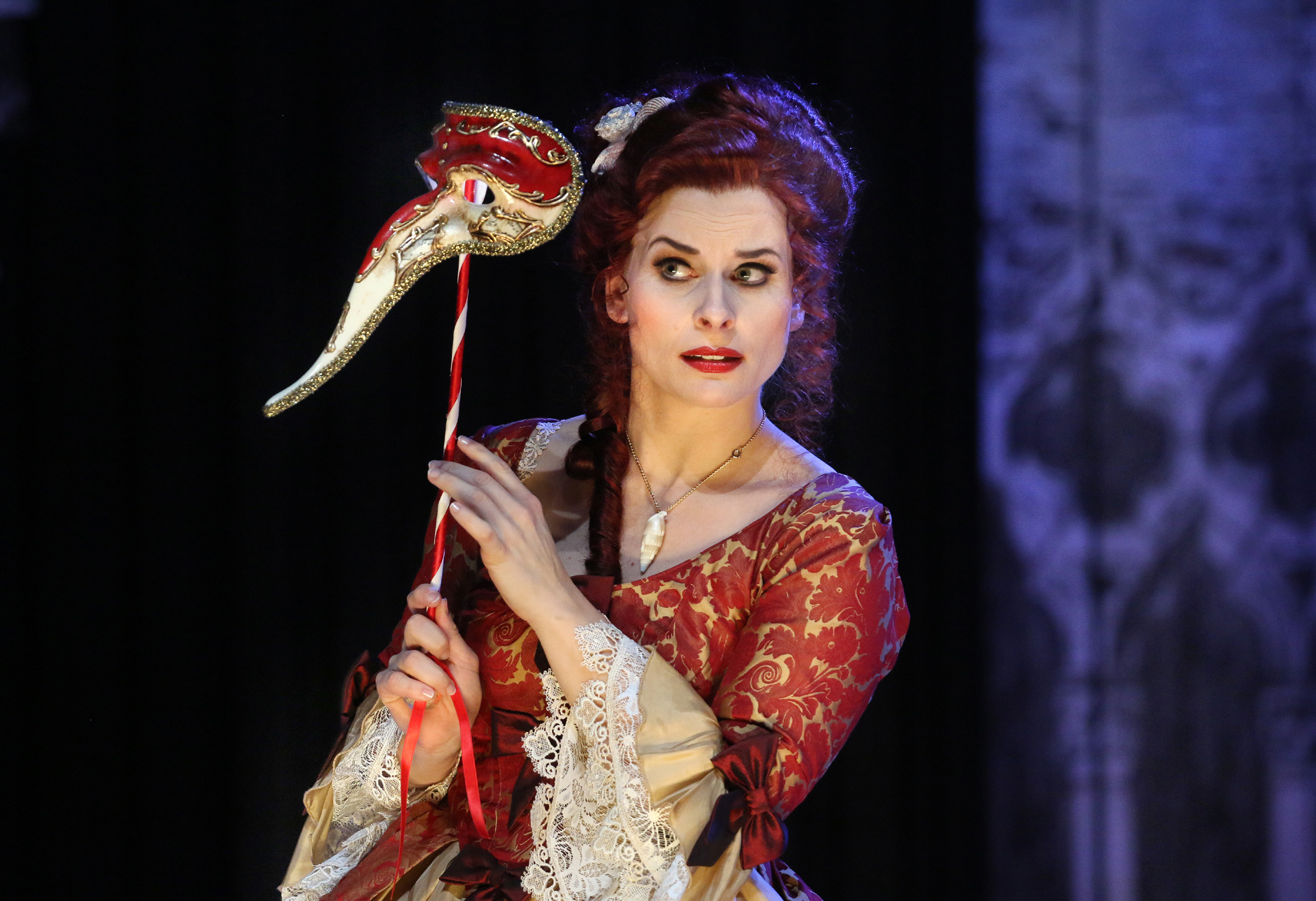
Franziska Tiedtke as Annina in Pforzheim’s “Eine Nacht in Venedig.” (Photo: Sabine Haymann)
Kurt Gänzl labels the Berlin world-premiere (3 October 1883) of this operetta a ‘failure’, and in fact even when the libretto was heavily revised for its subsequent Vienna premiere (9 October 1883) it never really caught the public’s imagination, yet still remains one of the most well-known Strauss operetta titles of them all. Strangely enough, the show’s longest run by far was in London in the 1940s where it achieved 433 performances. Erik Korngold and Anton Paulik re-orchestrated the show at different times, adding and subtracting music. In 1976, English National Opera staged a version in which the book had been rewritten by Murray Dickie, the director.
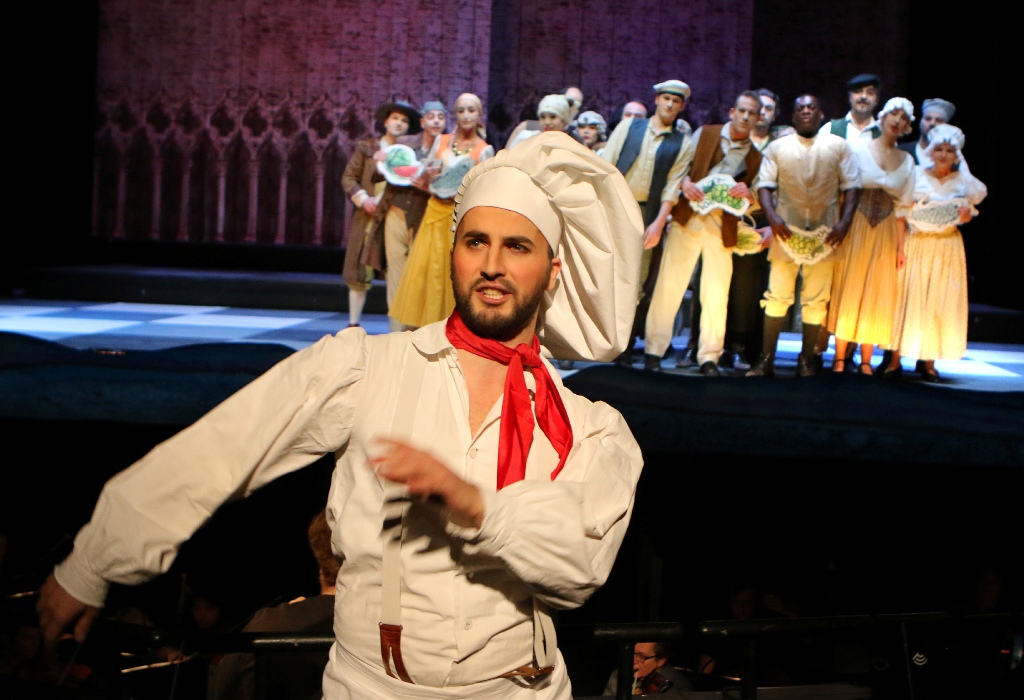
Nando Zickgraf as Papacoda in “Eine Nacht in Venedig” in Pforzheim. (Photo: Sabine Haymann)
Musically, Pforzheim’s production, using the 1883 Vienna score, was very successful. As with Blume von Hawaii in 2016, conductor Mino Marani succeeded in securing very stylish playing from the orchestra and the strong ensemble cast could all sing and act, as well as looking the right ages for their respective roles!
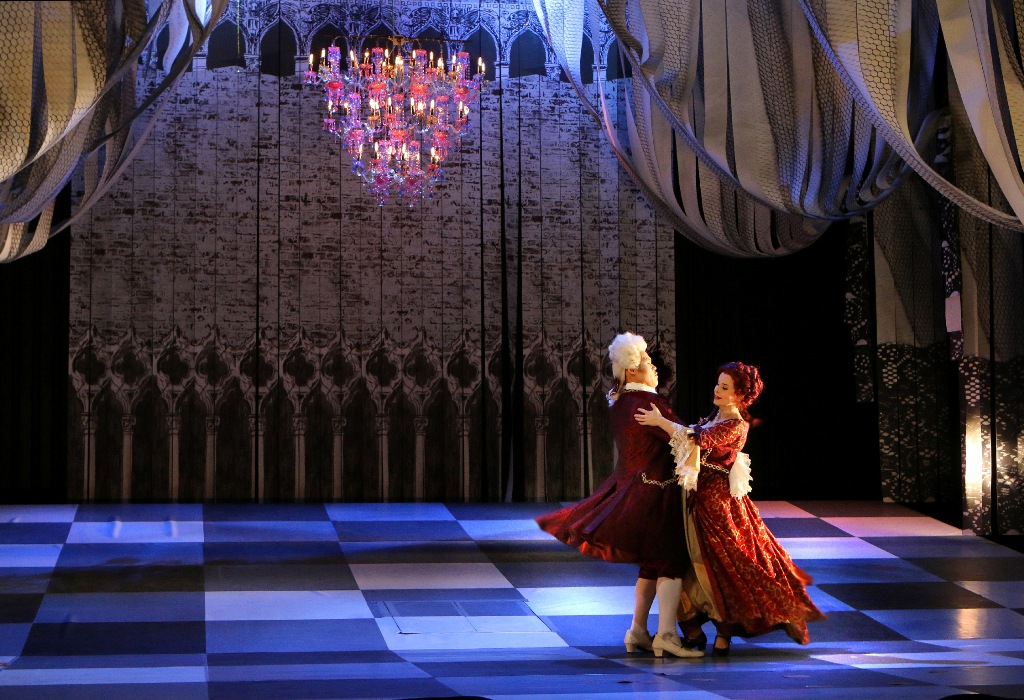
Kwonsoo Jeon (Herzog) and Franziska Tiedtke (Annina) waltzing in Pforzheim’s “Eine Nacht in Venedig.” (Photo: Sabine Haymann)
Johann Strauss II and his librettists were particularly successful in creating the role of the barber, Caramello, as was Franziska Tiedtke with Caramello’s side-kick Annina. I was particularly impressed by those cast in secondary roles, such as Brian Garner, the Senator in Black, and by the men’s chorus who had been treated as individuals by the inventive director, Tobias Materna. All the cast, principals and chorus, gave the operetta tremendous drive and energy throughout.
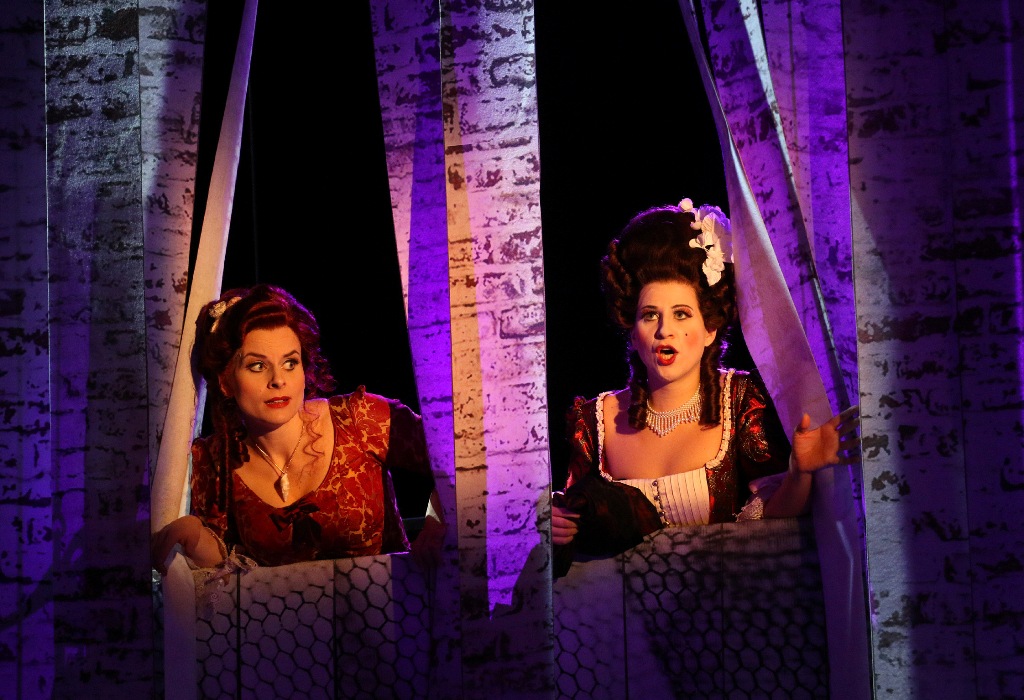
Franziska Tiedtke (Annina, left) and Larissa Angelini (Barbara Delaqua) in “Eine Nacht in Venedig” in Pforzheim. (Photo: Sabine Haymann)
Mythology has it that Strauss did not read the libretto (Zell/Genee) before he set it and that the lack of success of the operetta is due to its dramatic weaknesses, but, as Gänzl has pointed out, the libretto is no better and no worse than most of the others from the same team, and a good deal better than some!

Thomas Peters as the Narrator in “Eine Nacht in Venedig” in Pforzheim. (Photo: Sabine Haymann)
Pforzheim’s solution was to completely rewrite and/or omit the dialogue, instead using a narrator (Thomas Peters) and minimal spoken interaction between the characters. Although at times amusing, this did get rather tedious as there was too much narration, often holding up the action, and some of it was not as amusing as the authors (Tobias Materna, Thomas Peters and Thorsten Klein) clearly thought it should be. It also succeeded in making the ridiculous plot more rather than less difficult to follow! The director also decided that the interval was better placed in the middle of Act Two, rather than after Act One, which adversely affected the structure of the piece.
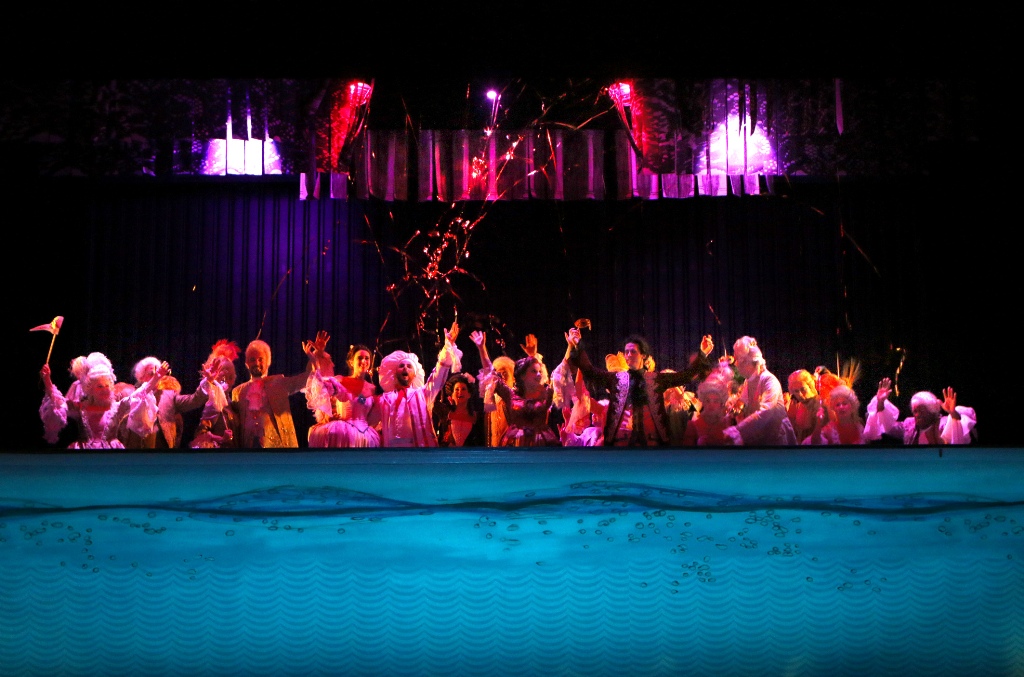
The ensemble of the Theater Pforzheim in “Eine Nacht in Venedig.” (Photo: Sabine Haymann)
I have nothing but praise for the set designer (Martina Staian): clearly on a tight budget, she had decided that simplest was most effective and just used painted cloths to suggest the Doge’s Palace and the moveable stage floor to create visually interesting pictures that the cast found easy to use.
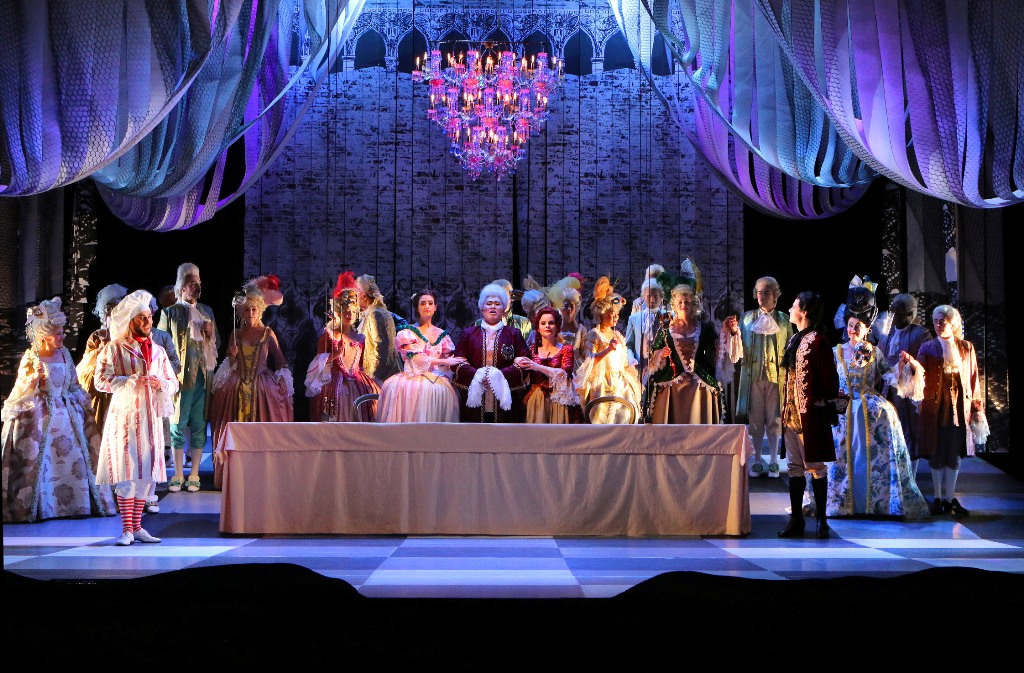
The masked ball in “Eine Nacht in Venedig” in Pforzheim. (Photo: Sabine Haymann)
Costumes (Dirk Steffan Goepfert) were sumptuous, especially at the ball in Act Two: each related well to the role being played and provided effective splashes of color. In fact musically and visually this show was a real treat, and I look forward to next season’s operetta, Der Bettelstudent, interesting if only because when Zell and Genée were asked by Strauss for a new operetta, they could have offered him Der Bettelstudent instead of Eine Nacht in Venedig, but thought that, as he was the stronger composer, he would make a better job of what they knew was the weaker libretto!
For information about future performances, click here.

It always astonishes me to read that so many people have “problems” with the Nacht in Venedig libretto. It’s a well-crafted comedy and needs real comedias to make it work, such as Girardi & Co. at the Vienna premiere. Reducing the piece to “just” the beautiful music, with some linking narrative, seems a bit of a waste. But I am happy to read that the Pforzheim cast was superb. They certainly look engaged!
Dear Kevin,
I think that nowadays the question in every new production is, how long do you want the piece to be. I agree with you, the original libretto has value; on the other hand it’s long and in Pforzheim the mentioned solution was chosen in order to obtain a short and compact evening. It’s surely might be wrong; but as of today it’s true that audiences expect shorter evenings than 130 years ago, and somehow one has to cope with that.
Best regards
Does Pforzheim not play Wagner and make audiences sit for hours? What about successful theater productions such as “Angels in America” part 1 and 2, played on one day as a special event? I think audiences in Germany and elsewhere in the Western world are perfectly capable of sitting through “longer” productions IF the productions have something interesting to offer. On the other hand, there is nothing wrong with shorter performances. But being brief(er) is not per se the better operetta option, I think. (Obviously, everyone needs to decide this for him- or herself.)
Yes, I definitely agree. On the other hand: Pforzheim does not normally play Wagner, and the longest shows are slightly more than 3 hours including break. So there is a custom for the audience, that it won’t be longer than that.
And there is surely the simple fact, that putting a lot of effort and best quality content for a longer show, assuring its effectiveness over the whole span, is harder.
This said, I welcome long, great productions!